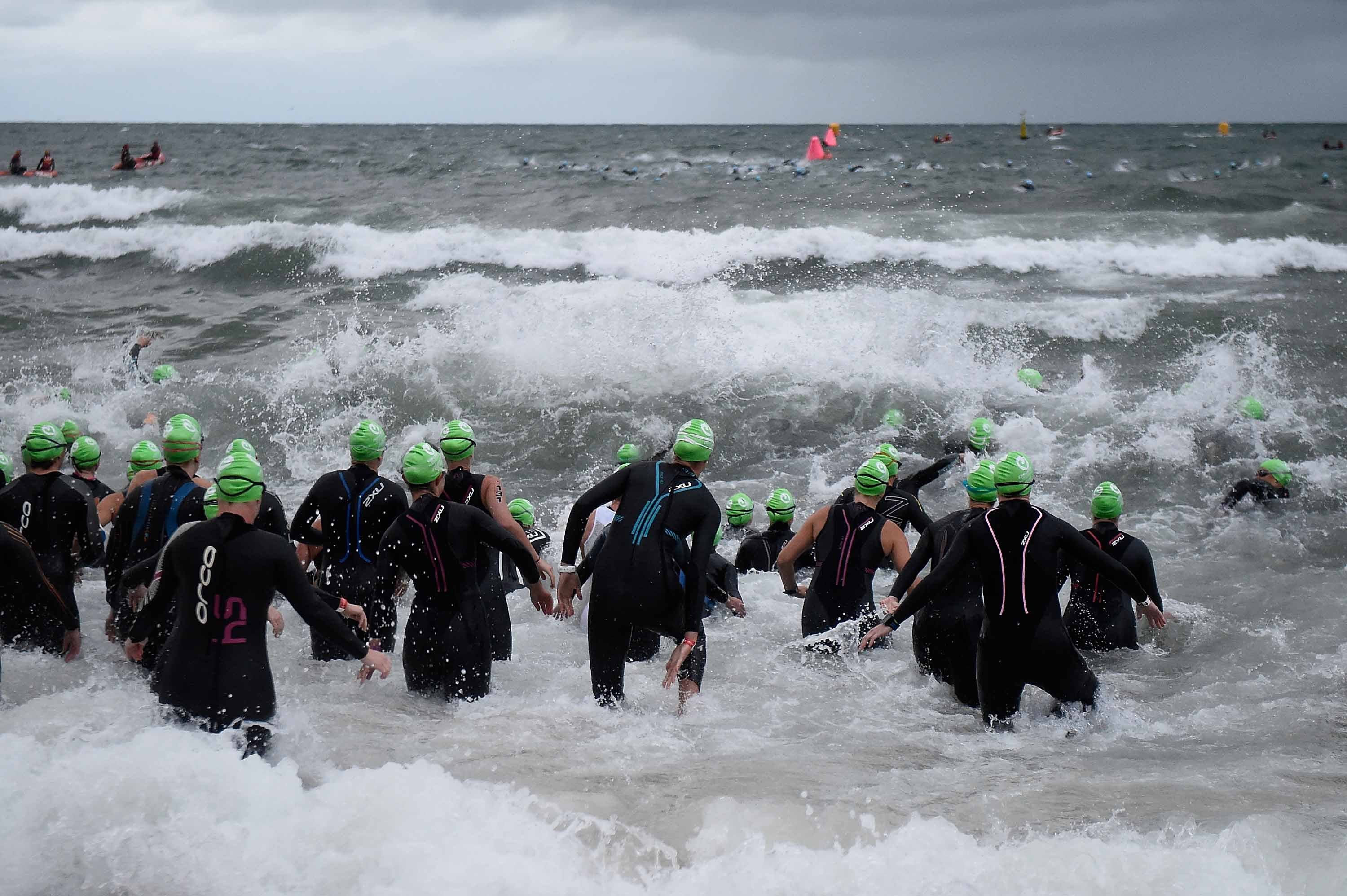Recover After A Rough Swim Start

Athletes prepare for a rough start at Challenge Melbourne. Photo: Matt Roberts/Getty Images for Challenge
Train yourself to recover quickly from a rough swim start.
Anyone who has experienced the frenzy and turmoil that takes place during the first few minutes of a multisport endurance event might strongly consider taking up bull running as a milder hobby.
No matter which way you approach it, the start will cause your heart rate to spike, adrenaline to skyrocket and breathing to become strained. This is all happening internally while dozens (or hundreds) of other people are trying to occupy the same space as you are externally. The challenging part is learning how to recover from this initial shock while continuing to swim along the course.
The secret to recovery happens in practice and training sessions months and weeks before the start of the race. Learning how to recover in a pool or controlled environment will make it easier for when you are in a race. Many training sessions will involve sprints or races to mimic the aggression and excitement of a mass start. But it is what you do at the end of the sprint that matters: Pause for a moment at the wall to hear your time or glance at the clock and then immediately start an active recovery.
RELATED: Tips For Relieving Open-Water Swim Anxiety
Active recovery refers to slowing your breathing and lowering your heart rate while swimming slowly and without needing to hold onto the side of the pool or lane rope. This is the exact situation in which many athletes find themselves 200–300 meters into the race, but most can continue swimming easy freestyle until they have regained their composure without needing something to hold onto.
You can also use a safety stroke to recover while continuing to swim forward. One example is to roll onto your back for a few breaths while you continue to kick or swim the backstroke. This is also a good position to readjust and empty water out of your goggles if they were knocked askew. Breaststroke is a great recovery and safety stroke because it is an easy way to hold your head above water to get your breathing under control and also to sight for the course buoys.
A tough or rough start does not mean the end of your race. Practice active recovery at the pool and in open-water training sessions so that the chaos of a mass start is nothing you can’t handle.